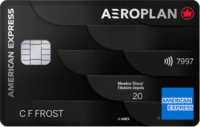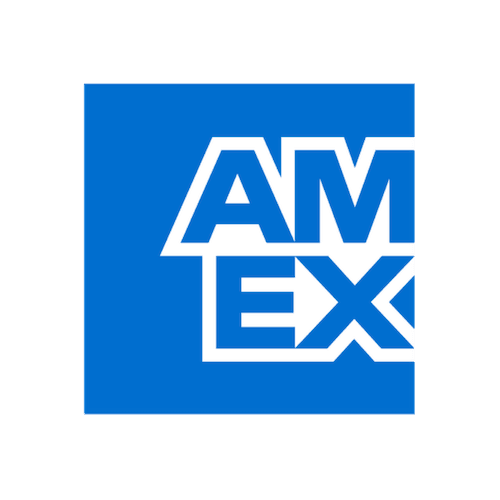Canadians can save and invest their money in a number of registered plans, such as the Registered Retirement Savings Plan (RRSP), theFirst Home Savings Account (FHSA) and the Tax-Free Savings Account (TFSA). But what are the differences? How do I choose the right savings plan?
Since we’re talking about personal finances, choosing the right savings plan depends on your personal and financial situation, your needs and your savings goals. You could choose one to plan your retirement (RRSP) or the other to save for short-term projects (TFSA). You could also choose one to save for the purchase of a first home, or even two different plans for the same purpose (HBP and FHSA). Which of these savings plans will give you a tax refund and optimize your tax situation?
In short, let’s explore their differences and learn when to use these savings plans.
Comparison table
First, here’s a comparison chart of the following registered savings plans: RRSPs, FHSAs and TFSAs.
| RRSP | FHSA | TFSA | |
| Creation date | 1957 | 2023 | 2009 |
| Main objective | Financing your retirement | Buying your first property | Short-, medium- and long-term projects |
| Secondary objectives |
Buying your first home (HBP) Financing studies (LLP) |
N/A | N/A |
| Eligibility criteria | Canadian resident with income | Canadian resident 18 years of age or older and first-time home buyer | Canadian resident at least 18 years of age |
| Contribution limit | 18% of previous year’s taxable income, up to contribution limit ($30,780 for 2023) | $8,000 per year (lifetime maximum of $40,000) | $7,000 in 2024 up to cumulative contribution limit since age 18 (maximum of $95,000 in 2024) |
| Tax-deductible contributions | Yes | Yes | No |
| Tax deductions carried forward | Yes | Yes | No |
| Deadline for contributions | February 29, 2024 (for tax year 2023) | December 31, 2024 (for the 2024 tax year) | December 31, 2024 (for the 2024 tax year) |
| Unused contributions carried forward to the following year | Yes | Yes | Yes |
| Limit for catching up on contributions | No | Yes (one catch-up year at a time) | No |
| Maximum withdrawal | No limit, except for HBP ($35,000) and LLP ($20,000) | No limit (contributions + return) | No limit |
| Taxable withdrawals | Yes, except in the case of an HBP or an LLP | No (for the purchase of a first qualifying home) | No |
| Refundable withdrawals for the purchase of a first home | Yes (over 15 years) | No | No |
| Maximum age or account closure | 71 years old |
Age 71 or 15th year of FHSA or year following 1st eligible withdrawal |
N/A |
| Find out more about the RRSP | Find out more about the FHSA | Find out more about the TFSA |
Now, here’s more information on each of these registered savings plans.
What is a Registered Retirement Savings Plan (RRSP)?
The Registered Retirement Savings Plan (RRSP) is a registered savings account that allows Canadians to save for their retirement. Income from an RRSP or RRIF will supplement government pensions such as the Quebec Pension Plan (QPP), Canada Pension Plan (CPP) and Old Age Security (OAS).
Income generated in the RRSP is tax-free as long as the funds remain in the plan.
RRSP contributions are eligible for a tax refund. But, also, to access or increase the amounts received from social programs such as child allowances and the Guaranteed Income Supplement (GIS).
The year you turn 71 years old (at the latest), your RRSP must be transferred to an RRIF (Registered Retirement Income Fund). RRSP and RRIF withdrawals are taxable. However, your tax rate in retirement should be lower than your tax rate when you’re in the workforce.
RRSPs can also be used to buy a first home or to go back to school:
- Home Buyers’ Plan (HBP ): This program allows you to withdraw up to $35,000 from your RRSP to buy or build a qualifying home. The HBP must be repaid over a 15-year period beginning two years after the year in which you withdrew the funds.
- Lifelong Learning Plan (LLP): This program allows you to withdraw up to $20,000 from your RRSP to finance eligible training or a return to school. The LLP must be repaid over a 10-year period.
Here are the key elements of an RRSP :
- Objective: tax-sheltered savings for retirement, buying a first home (HBP) or financing education (LLP).
- Contribution rights: 18% of the previous year’s taxable income, up to the contribution limit ($30,780 for 2023 and $31,560 for 2024).
- Contribution deadline: February 29, 2024 (for tax year 2023)
- Tax deductions: contributions are tax deductible for the current or future year.
- Withdrawals: Withdrawals are taxable, except under an HBP or LLP (conditions apply).
To find out more about RRSPs, such as eligibility criteria and contribution room, consult the following guide: “The Registered Retirement Savings Plan (RRSP): Everything you need to know “
What is a First Home Savings Account (FHSA)?
The First-Time Home Buyers’ Tax-Free Savings Account (FHSA) was introduced in Canada in 2023 to help Canadians enter the real estate market. It offers tax-sheltered savings, tax-deductible contributions (like RRSPs) and tax-free withdrawals (like TFSAs).
The contribution room is $8,000 per year, for a lifetime maximum of $40,000. Unlike the HBP (RRSP), FHSA withdrawals are not restricted. In fact, the entire FHSA balance (contributions and returns) can be used to purchase a first qualifying home.
Here are the key elements of the FHSA :
- Objective: tax-sheltered savings for the purchase of a first home.
- Contribution room: $8,000 per year, for a lifetime maximum of $40,000.
- Contribution deadline: December 31, 2024
- Tax deductions: contributions are tax deductible for the current or future year.
- Withdrawals: Withdrawals are tax-free for first-time home buyers.
To find out more about the FHSA, such as eligibility criteria and withdrawal rules, consult the following guide: “The FHSA: Everything you need to know “
What is a Tax-Free Savings Account (TFSA)?
The Tax-Free Savings Account (TFSA) is a registered savings account that allows Canadians aged 18 and over to contribute money, generate income and make withdrawals tax-free.
This savings plan was introduced by the federal government in 2009. The annual limit varies from year to year. In 2024, the contribution room is $7,000 and the lifetime limit is $95,000. Finally, investment income, such as capital gains, dividends and interest income, is not taxable.
Here are the key elements of the TFSA :
- Objective: tax-sheltered savings for short-, medium- or long-term projects.
- Contribution room: $7,000 in 2024 (the cumulative limit corresponds to the amount accumulated since age 18).
- Contribution deadline: December 31, 2024
- Unused contributions: unused contributions can be carried forward to the following year.
- Withdrawals: Withdrawals are tax-free (for any reason), have no maximum limit and are added to the following year’s contribution room.
- Tax impact: TFSA withdrawals have no tax impact. What’s more, they are not taken into account when calculating social programs such as family allowances and the Guaranteed Income Supplement (GIS).
To learn more about the TFSA, such as eligibility criteria and contribution room, consult the following guide: “The Tax-Free Savings Account (TFSA): Everything you need to know “
Which is better - RRSP, FHSA or TFSA?
There’s no single best option, because all 3 savings plans have their own objectives and advantages. Of course, for some objectives, the plans overlap. For example, to buy your first home, you can use the FHSA and the HBP (RRSP). Another example: when it comes to retirement planning, RRSPs and TFSAs can be used depending on your situation and retirement goals.
Ideally, the best option for an individual is to invest in all 3 plans: RRSP, FHSA and TFSA. Provided you’re not already a home owner, of course (in which case, you can eliminate the FHSA directly).
That said, who really has the savings capacity to be able to maximize all 3 registered savings plans at the same time? In 2024, we will need to save :
- 18% of previous year’s income or $31,560 (whichever is less) to maximize RRSP (plus unused contributions, if any)
- $8,000 to maximize the FHSA
- $7,000 to maximize the TFSA (plus unused contributions, if any)
That’s why you need to choose a savings strategy based on your personal and financial situation and your savings goals. Consider the tax advantages of the 3 plans, your eligibility for the plans (are you 18? do you already own your home?), your marginal tax rate (is the tax refund low or high?), the duration of your savings (short-term or long-term savings?) and many other factors.
How do I invest in an RRSP, FHSA and TFSA?
Registered savings plans, such as RRSPs, FHSAs and TFSAs, are not investments. The latter are savings accounts in which you can invest.
Eligible investments include :
- Mutual funds (MF)
- Exchange Traded Funds (ETFs)
- Guaranteed Investment Certificates (GICs)
- Stocks
- Government or Corporate obligations
- Asset allocation ETFs
- Money Market funds
- High-interest savings ETFs
- Etc.
These types of investments are offered by chartered banks, credit unions, trust companies and insurance companies.
They are also offered by online brokers (brokerage platforms) such as National Bank Direct Brokerage, Desjardins Online Brokerage (Disnat), CIBC Investor’s Edge, Questrade and Wealthsimple.
Bottom Line
Whatever your goal, whether short-term (travel, car, renovations) or long-term (retirement savings), having a combination of savings plans is often the best option. Given the annual limits and tax advantages of the savings plans, you need to find out about the advantages and disadvantages to be able to make an informed choice.
If necessary, don’t hesitate to make an appointment with a professional financial advisor. They can analyze your situation and help you make the right choice, based on your personal circumstances and savings goals.
For more information on these 3 registered savings plans, consult the following guides:
Frequently Asked Questions
Here are answers to the most frequently asked questions about RRSPs, FHSAs and TFSAs.
What's the difference between a TFSA and an FHSA?
The TFSA (Tax-Free Savings Account) and the FHSA (First Home Savings Account) are two different registered savings plans. First, the TFSA is a tax-sheltered savings account for Canadians. Contributions are not tax-deductible and withdrawals are not taxable. The contribution limit for 2024 is $7,000. On the other end, FHSA aims to promote home ownership. Contributions are tax-deductible and withdrawals are tax-free for the purchase of a qualifying home. It allows you to save $8,000 a year tax-free, up to a lifetime maximum of $40,000.
Is it possible to transfer from an RRSP to an FHSA?
Yes If you have already accumulated savings in your RRSP and wish to use the FHSA, you can transfer them from your RRSP to an FHSA. Of course, you must comply with the FHSA contribution limits. Since the tax deductions were already taken when you contributed to your RRSP, you won’t have to take any new tax deductions when you transfer the funds to the FHSA. However, unlike the HBP (RRSP), amounts used to purchase a first eligible property do not have to be repaid into the savings plan.
Is it possible to combine HBP and FHSA?
Yes, it is possible to combine the HBP (RRSP) and the FHSA for the purchase of a first eligible property. Be sure to check the rules for each plan. The maximum amount that can be used under the HBP is $35,000 (or $70,000 for a couple), to be repaid over a 15-year period. For its part, the FHSA can be withdrawn in full, i.e. the contribution room of $40,000 (or $80,000 for a couple) and the return and amounts withdrawn do not have to be paid back into the plan.
Can I have a TFSA and an FHSA?
Of course. The TFSA (Tax-Free Savings Account) and the FHSA (First Home Savings Account) are two different savings accounts. The former can be used for a variety of short-, medium- and long-term objectives. The second is used for the purchase of a first qualifying home. If you have the capacity to save in both, TFSA contribution room is $7,000 in 2024 and FHSA contribution room is $8,000 per year (to a lifetime maximum of $40,000).
When will the FHSA be available?
The FHSA has been available in Canada since April 1, 2023. However, not all financial institutions currently offer the FHSA. Check with your bank or credit union, or consult the list in this article: The FHSA: Everything you need to know (“Which bank offers the FHSA?” section).
Is the FHSA tax-deductible?
Yes, FHSA contributions are tax deductible, just like RRSPs. What’s more, tax deductions can be carried forward into the future, for example, when your marginal tax rate is higher.








